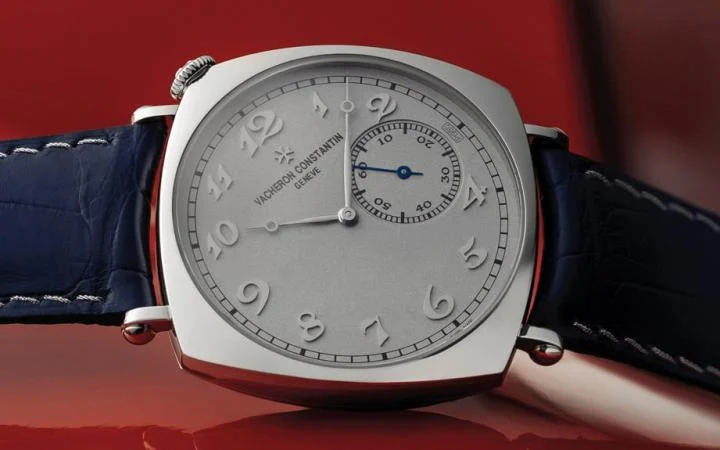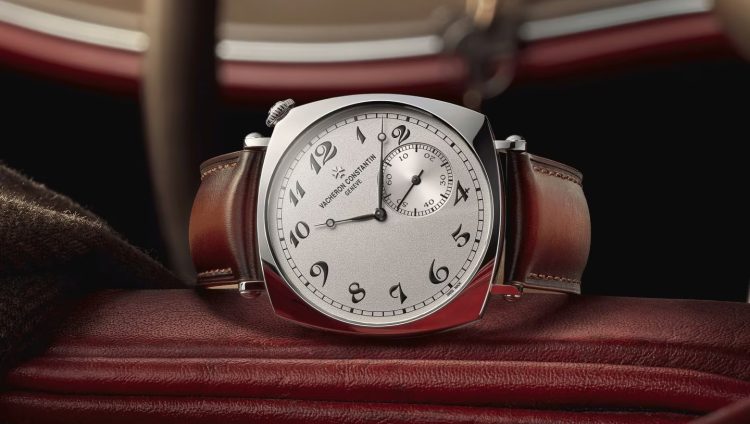I. Origins and Early History: The Birth of a Watchmaking Dynasty
1. Founding of Vacheron Constantin (1755)
The story of Vacheron Constantin begins in 1755, when Jean-Marc Vacheron, a skilled watchmaker, opened his workshop in Geneva, Switzerland. Aged just 24 at the time, Vacheron quickly gained a reputation for creating finely crafted timepieces, setting the stage for what would become one of the most illustrious names in horology. The brand’s early success was rooted in the tradition of Swiss watchmaking and the region’s rich history of precision craftsmanship.
In the early years of its existence, Vacheron Constantin was focused primarily on producing pocket watches. The brand’s timepieces were known for their exceptional quality, and Vacheron quickly established a loyal customer base among Geneva’s elite. By 1755, the company’s name had already begun to gain recognition, though it was still a small operation.
2. The Birth of Vacheron Constantin’s Signature: Excellence and Craftsmanship
The Vacheron family’s watchmaking tradition was passed down from father to son. By the early 19th century, Jean-Marc’s grandson, François Constantin, became a key figure in the development of the brand. François Constantin was instrumental in growing the company’s reputation for producing not just fine watches but watches of exceptional craftsmanship. He traveled to Europe to acquire a global clientele, and Vacheron Constantin’s creations were soon sought after by royalty, aristocrats, and wealthy individuals across Europe.
François Constantin’s influence ensured that the brand would remain synonymous with luxury and prestige. By the early 19th century, Vacheron Constantin had begun to develop its own signature style, characterized by meticulous attention to detail, finely finished movements, and an unwavering commitment to precision.
II. The Evolution of Vacheron Constantin: Innovation and Prestige
1. Technical Innovation and the Rise of Haute Horlogerie
Vacheron Constantin quickly distinguished itself in the world of horology by introducing innovative watchmaking techniques and designs. One of the brand’s defining characteristics has always been its ability to merge traditional craftsmanship with forward-thinking technological advancements.
In 1829, Vacheron Constantin introduced a groundbreaking complication: the perpetual calendar. This feature, which allowed a watch to automatically adjust for the varying lengths of months and leap years, was a testament to the brand’s engineering brilliance. This innovation would pave the way for many more sophisticated complications in the years to come.
In the 19th century, Vacheron Constantin was also one of the first to incorporate tourbillons and minute repeaters into its designs. These technical innovations allowed the brand to demonstrate not only its prowess in mechanical watchmaking but also its dedication to creating highly complex, intricate timepieces that pushed the boundaries of what was possible in horology.
2. The Introduction of Iconic Models: A Legacy of Excellence
Throughout the 20th century, Vacheron Constantin continued to make waves in the world of watchmaking. The company introduced several iconic models that would become synonymous with the brand’s reputation for luxury and craftsmanship.
One of the most significant releases during this period was the Vacheron Constantin Patrimony collection, first introduced in the 1950s. This series was a reflection of the brand’s commitment to classic, timeless design, with elegant, understated lines and sophisticated complications. The Patrimony collection became synonymous with elegance and refinement, embodying the essence of Vacheron Constantin’s watchmaking philosophy.
Another pivotal moment in the brand’s history was the introduction of the Overseas collection in the late 1990s. This model, designed to appeal to the modern, cosmopolitan watch lover, combined technical sophistication with a sporty, robust aesthetic. The Overseas series signaled Vacheron Constantin’s ability to adapt to changing market tastes while staying true to its heritage of precision and elegance.

III. Key Moments and Milestones in Vacheron Constantin’s History
1. The Patronage of Royalty and Nobility
Vacheron Constantin has long been a favorite among royalty, aristocrats, and discerning watch collectors. The brand’s watches have adorned the wrists of notable figures such as King Farouk of Egypt, the Shah of Iran, and Pope Pius XI. The brand’s watches were often customized with intricate engravings, diamonds, and precious materials to suit the tastes of the aristocracy.
Vacheron Constantin’s patronage by royalty further cemented its status as one of the most prestigious watch brands in the world. For much of the 19th and early 20th centuries, the brand’s timepieces were seen as a symbol of status, luxury, and exclusivity.
2. The Acquisition by Richemont Group (1996)
In 1996, Vacheron Constantin was acquired by the Swiss luxury goods conglomerate Richemont Group, which owns other prestigious watch brands such as Cartier, Jaeger-LeCoultre, and Piaget. This acquisition provided Vacheron Constantin with the resources to continue expanding its global presence while maintaining its reputation for producing watches of exceptional quality and craftsmanship.
Despite the change in ownership, Vacheron Constantin maintained its independence in terms of watchmaking philosophy and design. The brand continued to produce watches that exemplified traditional Swiss watchmaking craftsmanship, while also embracing modern innovations.
3. 175th Anniversary and Modern Recognition
In 2005, Vacheron Constantin celebrated its 175th anniversary, marking an important milestone in the brand’s history. The anniversary was commemorated with the launch of several special-edition watches, including a stunning Tour de l’Île model, which was hailed as one of the most complicated wristwatches ever created at the time. The Tour de l’Île featured 16 complications, including a perpetual calendar, minute repeater, and chronograph, and was a testament to the brand’s mastery of complex watchmaking.
Today, Vacheron Constantin is widely regarded as one of the “holy trinity” of Swiss watchmaking, alongside Patek Philippe and Audemars Piguet. Its timepieces are highly coveted by collectors and enthusiasts for their craftsmanship, elegance, and technical sophistication.
IV. Craftsmanship and Technology: The Heart of Vacheron Constantin
1. The Mastery of Complications
At the heart of Vacheron Constantin’s identity lies a commitment to complications—the intricate features that go beyond basic timekeeping. From the perpetual calendar to the minute repeater, Vacheron Constantin has long been a leader in producing complex and beautifully crafted timepieces that showcase the brand’s technical prowess.
Vacheron Constantin is also known for creating unique pieces and bespoke complications for clients who desire timepieces with extraordinary features. For instance, the Grande Complication series combines multiple complications within a single watch, including minute repeaters, tourbillons, chronographs, and more. These watches represent the pinnacle of watchmaking artistry and are produced in extremely limited numbers.
2. The Art of Hand-Finishing and Decoration
Vacheron Constantin is known for its exceptional hand-finishing techniques, which are visible in every aspect of its timepieces. Whether it’s the engraving of the movement, the polishing of the case, or the decoration of the dial, the level of craftsmanship that goes into each watch is extraordinary.
The brand’s Geneva Seal (Poinçon de Genève), one of the most prestigious certifications in watchmaking, is awarded to watches that meet the highest standards of craftsmanship and precision. Only a few Swiss watchmakers are able to consistently meet the demanding criteria required for this prestigious mark.
V. Iconic Vacheron Constantin Models
1. The Patrimony Collection
The Patrimony collection, introduced in the 1950s, is one of Vacheron Constantin’s most iconic lines. Known for its clean, minimalist design, the Patrimony collection features watches with sleek lines, thin cases, and sophisticated dials. The collection is a testament to the brand’s commitment to timeless elegance and precision.
2. The Overseas Collection
The Overseas collection, launched in the 1990s, represents Vacheron Constantin’s commitment to producing sporty, yet elegant timepieces. The collection includes models with robust cases, self-winding movements, and modern designs, making them ideal for the global traveler. The Overseas collection is also known for its interchangeable straps, allowing wearers to easily switch between metal bracelets, rubber straps, and leather bands.
3. The Historiques Collection
The Historiques collection showcases the brand’s
rich heritage by recreating some of Vacheron Constantin’s most iconic historical models. These watches, which often feature vintage-inspired designs and modern movements, are a tribute to the brand’s longstanding tradition of watchmaking excellence.
Conclusion: Vacheron Constantin’s Enduring Legacy
Vacheron Constantin’s story is one of innovation, craftsmanship, and excellence in the art of watchmaking. From its founding in 1755 to its place in the modern era as one of the most revered luxury watch brands in the world, Vacheron Constantin continues to represent the pinnacle of Swiss horology. With its legacy of technical mastery, aesthetic elegance, and rich history, Vacheron Constantin remains a symbol of luxury, prestige, and innovation in the world of fine watches.
As the brand moves into the future, its unwavering commitment to craftsmanship, innovation, and artistry ensures that Vacheron Constantin will continue to captivate watch enthusiasts and collectors around the world for generations to come.





































